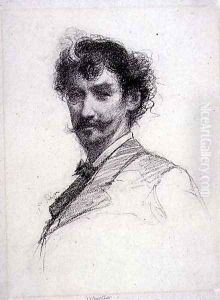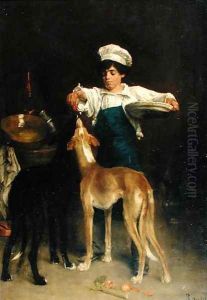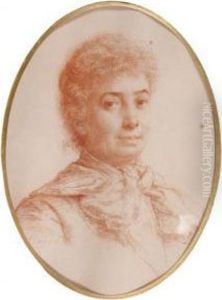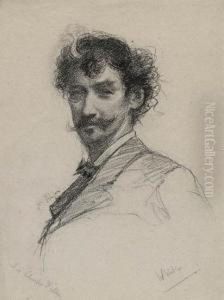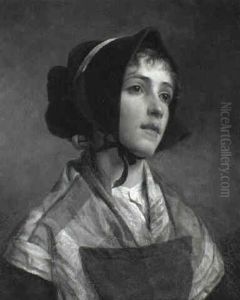Paul Adolphe Rajon Paintings
Paul Adolphe Rajon was a French etcher and lithographer who gained prominence in the late 19th century for his portraits and reproductive prints after well-known paintings of the time. Born on June 2, 1843, in Dijon, France, Rajon began his artistic journey at a young age. Initially, he trained as a photographer, a skill that would later influence his work in etching by giving him a keen eye for detail and shading.
Rajon moved to Paris to pursue his artistic career, where he studied painting under Isidore Pils and Henri Lehmann at the École des Beaux-Arts. However, he soon found his calling in etching, which allowed him to capture the essence of a subject with line and shade. His skill in this medium was such that he quickly became one of the most sought-after printmakers of his time, celebrated for his ability to translate the works of contemporary painters and Old Masters into his own etched interpretations.
Throughout his career, Rajon was commissioned to create etchings based on the works of esteemed artists such as Rembrandt, Velázquez, and Watteau, as well as contemporary figures like Millet and Renouf. His prints were highly regarded for their fidelity to the original works and the sensitivity of his etching technique. Rajon's portraits of notable public figures and intellectuals of the day, including Victor Hugo and Ernest Renan, were also widely admired.
Rajon exhibited his works in the Paris Salon and received recognition for his contributions to art with medals in 1869 and 1873. His reputation extended beyond France, and he enjoyed success in Britain and the United States as well. Rajon's work epitomized the etching revival of the late 19th century, a movement that celebrated printmaking as an art form in its own right.
Unfortunately, Rajon's life and career were cut short when he died at the age of 45 on June 8, 1888, in Auvers-sur-Oise, France. Despite his relatively brief career, Paul Adolphe Rajon left a lasting impact on the world of printmaking, and his etchings continue to be appreciated by collectors and art historians for their technical finesse and the window they provide into the art and culture of the 19th century.
